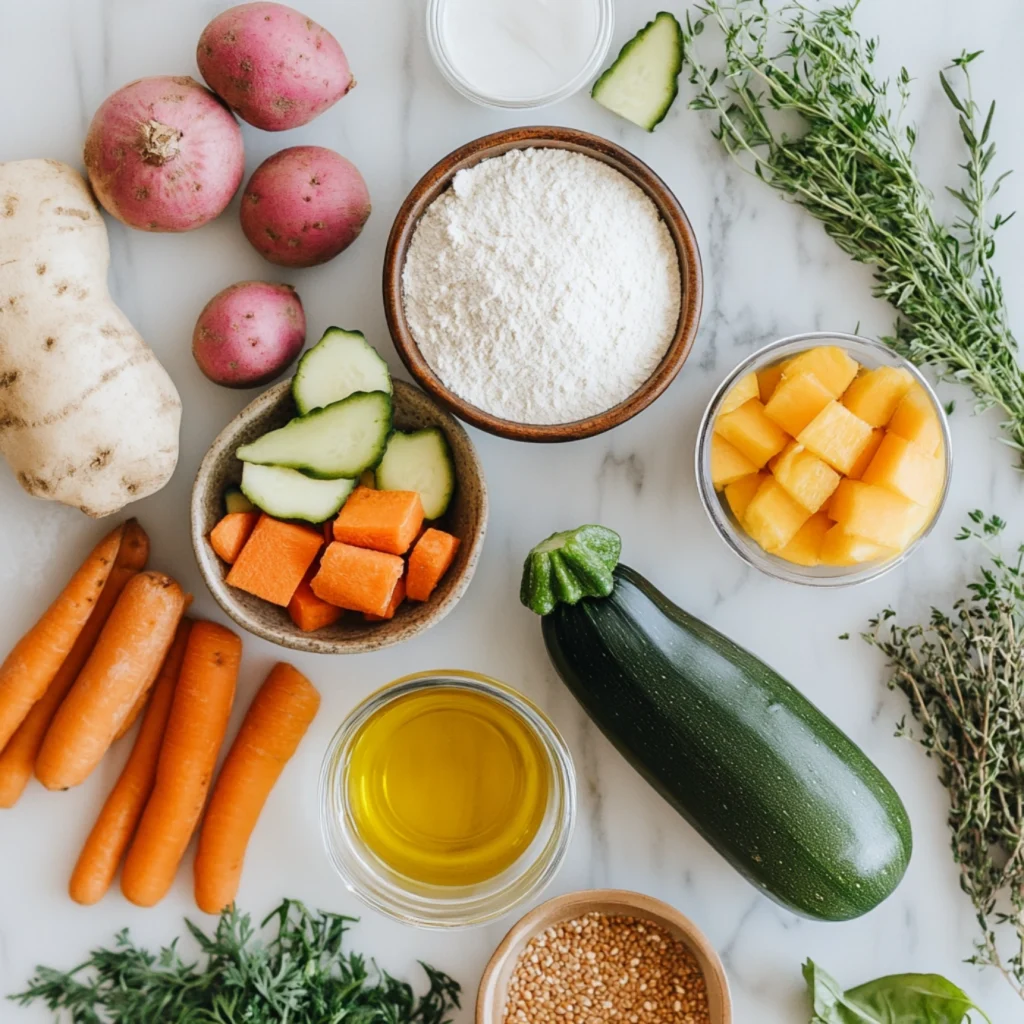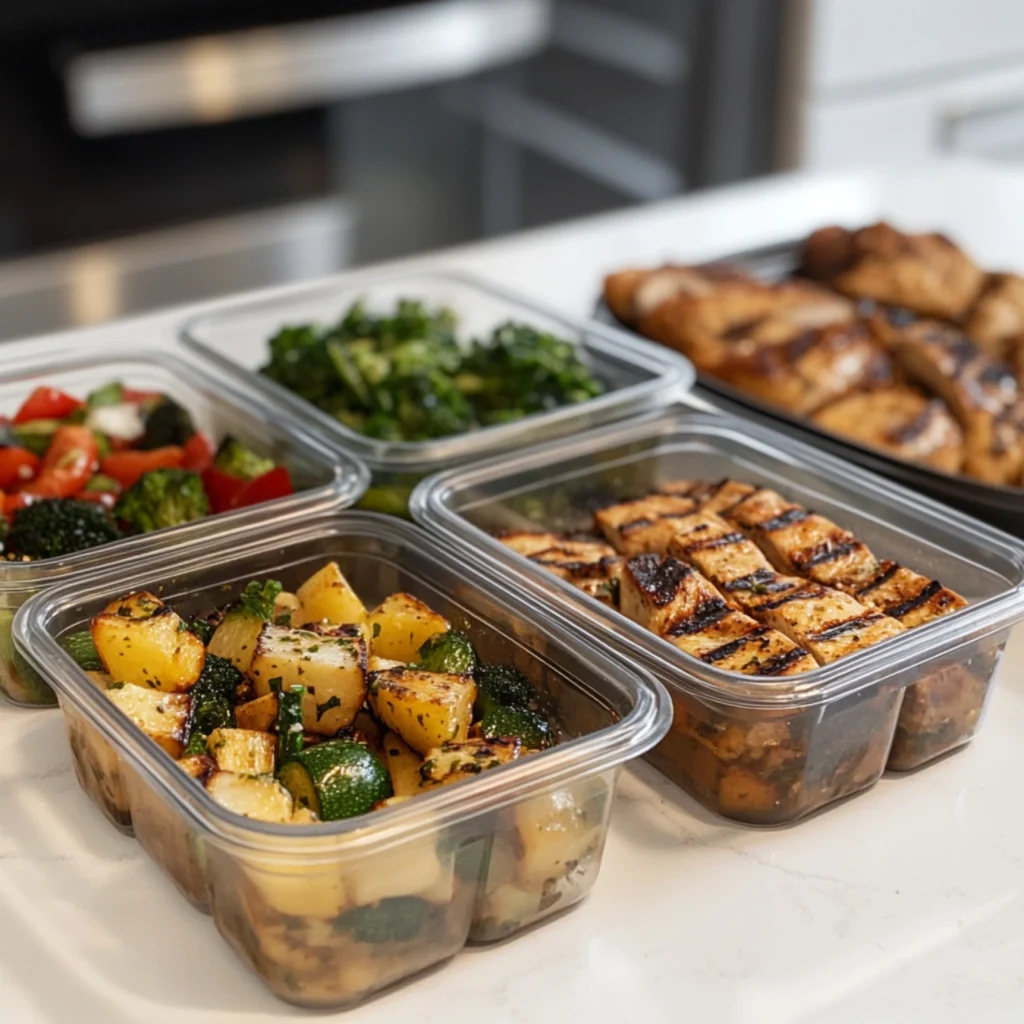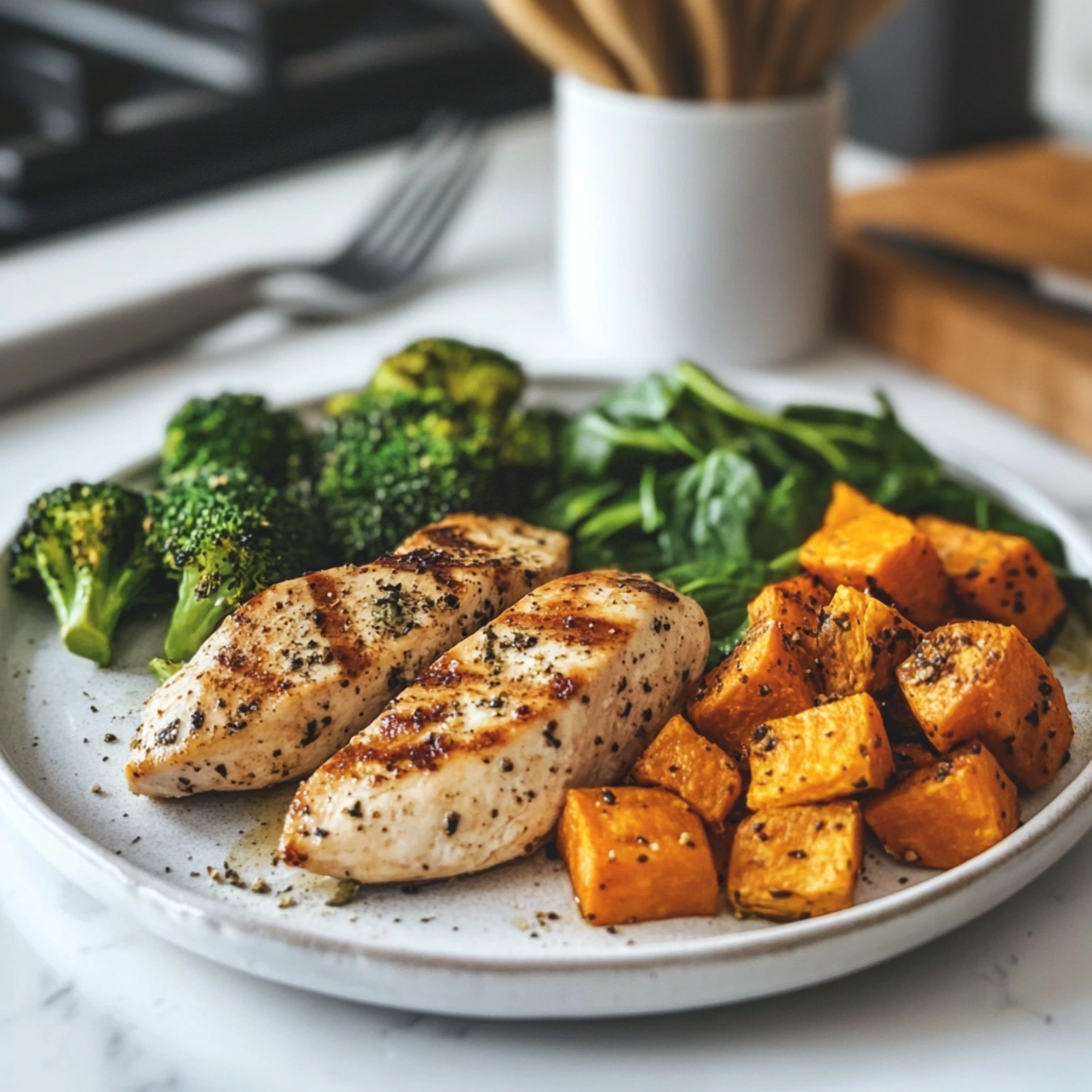Eating AIP (Autoimmune Protocol) friendly need not be difficult or boring! These five simple AIP recipes will help you keep your meals tasty, complete, and nutrient-dense, whether your taste is for a filling breakfast, a lunch heavy in proteins, or a dinner. From juicy lemon herb salmon to crunchy roasted sweet potatoes, every dish is meant to be straightforward, savory, and entirely AIP-approved.
Let’s explore these nutrient-dense, anti-inflammatory foods that will keep you feeling great!
Table of Contents
Why Will You Love These Recipes?
- 100% AIP-friendly: Not dairy, wheat, lentils, or inflammatory foods.
- Easy to follow and requiring few ingredients, every recipe is quick and simple.
- Full of Flavor: AIP does not mean it is bland only by virtue! Every meal comes to life with spices, fresh herbs, and good fats.
- Meal-Prep Friendly: These dishes can be prepared beforehand for simple consumption all during the week.
- Healing Kale Soup Recipe, loaded with anti-inflammatory components, is a terrific AIP-friendly soup to check out.
For a great AIP-friendly soup, check out Healing Kale Soup Recipe, which is packed with anti-inflammatory ingredients.
AIP Chicken with Sweet Potato Bowl
Components
- Lean, juicy protein found in chicken breasts will keep you full.
- Olive oil makes the chicken sear incredibly good.
- Strong, anti-inflammatory spices include garlic powder, turmeric, and paprika.
- Sweet potatoes are the perfect base; they are naturally sweet and high in fiber.
- Coconut Oil brings the potatoes’ inherent flavor to life.
- Add richness and warmth to the taste with cinnamon and ginger.
- Optional but gives a crisp finishing touch is fresh parsley.
- The recipe card below lists whole ingredient measurements!
Methods of Making It
- Set your oven to 400°F (200°C).
- Olive oil, garlicky powder, turmeric, paprika, salt, and pepper season chicken breasts.
- Cut sweet potatoes with coconut oil, cinnamon, ginger, salt, and pepper on a baking pan.
- If there is room, place the chicken on the same baking sheet; otherwise, use another.
- Roast until completely done, turning the chicken midway through 25 to 30 minutes.
- Present the chicken over roasted sweet potatoes, then top it with parsley.
- To make a quick grab-and-go dinner, meal prep the sweet potatoes and chicken ahead of time!
AIP Ground Beef with Vegetable Stir-fry
Foods
- For additional nutrients, ground beef grass-fed if at all possible is ideal.
- Coconut Oil keeps it AIP-friendly and increases richness.
- Combining colors and textures, zucchini, broccoli, and carrot.
- Red onion gives a quite sweet taste.
- The perfect soy free, umami- packed sauce is coconut Aminos.
- Key AIP-friendly condiments are ginger powder and garlic powder.
How To Create It
- On a big skillet set on medium heat, warm coconut oil.
- Using a spoon, break apart the ground meat as it browns.
- Then, add the onion, carrot, broccoli, and zucchini. Stir-fry till crisp tender, five to seven minutes.
- Add coconut aminos, ginger, and garlic powder; whisk to blend.
- Cook until the sauce thickens somewhat, two to three minutes more.
🥄 Pro Tip: Toss over cauliflower rice for a more substantial dinner!
Aip Lemon Herb Salmon
Materials
- An excellent source of omega-3s and protein is salmon fillets.
- Add moisture and strong acidity with olive oil and lemon juice.
- Light, fragrant herbs for a fresh taste are thyme and oregano.
- Key seasonings that highlight taste include salt and pepper.
How Would You Create It?
- Turn the oven’s temperature to 375°F (190°C).
- Arrange salmon fillets on a parchment-lined baking sheet.
- Drizzle over olive oil and lemon juice.
- Toss with thyme, oregano, salt, and pepper.
- Bake until the salmon flakes easily with a fork, 15 to 20 minutes.
🥄 Pro Tip: For a whole meal, team with roasted Brussels sprouts or a fresh salad!
AIP Avocado & Sweet Potato Salad
Materials
- Roasted to crispy excellence, sweet potatoes.
- Avocado is creamy and loaded with good fats.
- Mixed greens a light, fresh foundation.
- Paprika, lemon juice, and cilantro provide a taste boost.
How To Make It?
- Set oven to 400°F (200°C).
- Toss olive oil, paprika, salt, and pepper sweet potatoes; roast for 20 to 25 minutes.
- Arrange mixed greens, avocado, and sweet potatoes in a big bowl.
- Whisk olive oil, lemon juice, and cilantro; drizzle over the salad.
- Toss lightly, then present right away.
🥄 Pro Tip: Add grilled chicken to increase the filling value of a dinner.

AIP coconut banana pancakes
Components
- Bananas are naturally sweet and tie the batter together.
- Eggs help to produce a fluffiness.
- Perfect AIP friendly flour is coconut flour.
- Add warmth and lift with baking soda and cinnamon.
- Coconut oil makes the ideal golden crust.
How To Create It
- Mash bananas till they become smooth. Whisk in eggs.
- Stir in cinnamon, baking powder, and coconut flour.
- In a skillet set over medium heat, warm the coconut oil.
- Pour batter about two tablespoons per pancake into the skillet.
- Cook on each side for two to three minutes until golden brown.
- For a naturally sweet finish, serve with fresh fruit or honey.
- Simplify your week with AIP-friendly basics for meal prep.

Frequent Questions About AIP Diet and Recipes
Are Bananas AIP acceptable?
Indeed, bananas are AIP-compliant and a flexible component for AIP recipes. They are a naturally occurring sweetener for smoothies, baked products, and snacks. Moderation is important, though, particularly for people watching their sugar intake. Green bananas and plantains are even better options because of their reduced sugar content and greater resistant starch levels which support intestinal health.
Can I drink coffee on the AIP diet?
The AIP diet forbids coffee, sadly. Considered a gastrointestinal irritant, it could set up inflammation. Try herbal teas like chamomile or peppermint for a pleasing substitute; sip roasted dandelion root tea to taste like coffee. Another AIP-friendly way to savor a warm drink is coconut milk lattes made with turmeric or matcha.
The Best Diet for AIP?
Eliminating inflammatory factors and stressing nutrient-dense, whole foods form the ideal AIP diet. This covers many vegetables, lean proteins, good fats, and AIP-compliant seasonings. Although the approach is rigorous during the elimination phase, it is flexible enough to allow later food reintroduction to pinpoint personal triggers, therefore addressing individual needs.
Is hummus allowed on the AIP diet?
Made from chickpeas and tahini, traditional hummus does not fit AIP guidelines. But you can savor an AIP-friendly variation made with olive oil, garlic, and lemon juice mixed with roasted cauliflower or zucchini. Without inflammatory components, this replacement gives hummus a creamy texture and tangy taste.
Final Thought: Your Trip through AIP Recipes
Why AIP Recipes Have Changing Power in Life
Using AIP recipes daily will change your attitude toward food and health. Many people find fewer symptoms, more energy, and better general well-being by concentrating on anti-inflammatory components and cutting common triggers. It’s about forging a lifestyle that supports healing and nourishment, not only about adhering to a diet.
Advice Final Notes on AIP Diet Success
Although beginning the AIP diet can seem intimidating, your best friend is preparation. Keep AIP basics in your cupboard, try out some unique ideas, and never hesitate to ask experts or internet forums for help. Recall that the elimination phase is transient; therefore, reintroductions will assist you in creating a diet fit for your requirements.
Motivation to Try and Maintaining Positive Attitudes
Learning and adaptation define the path with AIP recipes. Let yourself experiment with different tastes, modify recipes, and welcome the educational process. Little victories like learning a great new recipe or perfecting an AIP-friendly alternative can tremendously impact.
Dedication and a good attitude can help you to support your health objectives and enjoy good food. Here’s your success using AIP cooking one recipe at a time!

